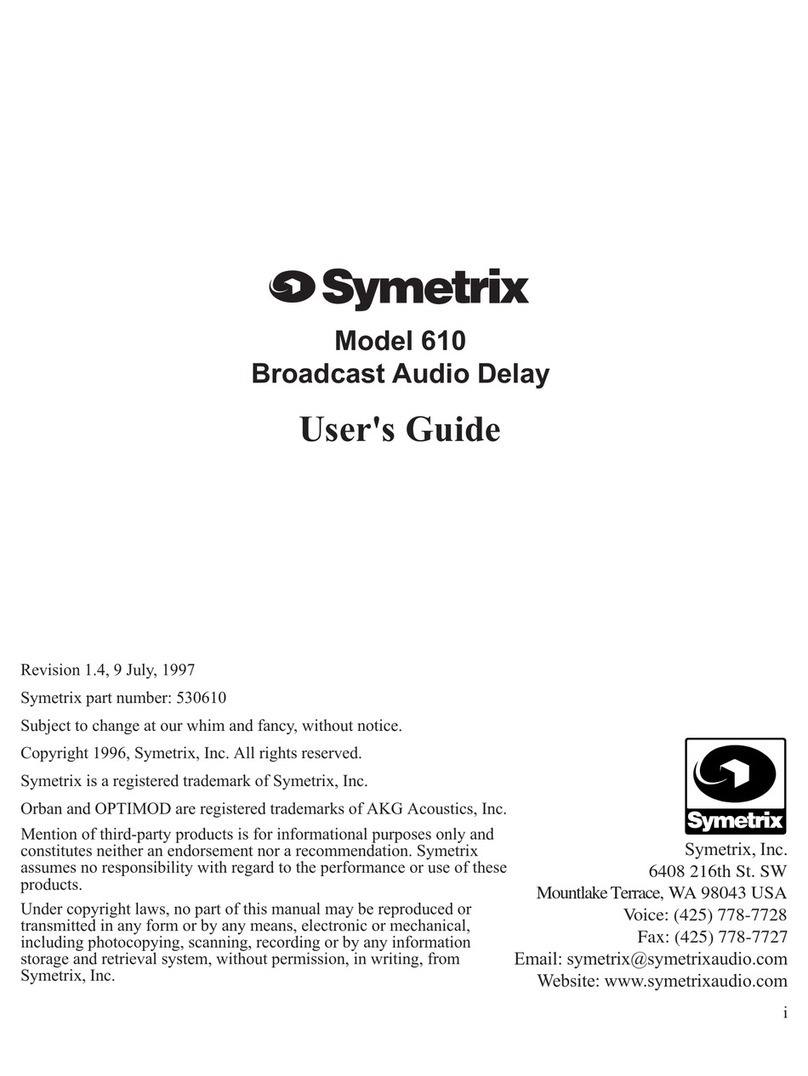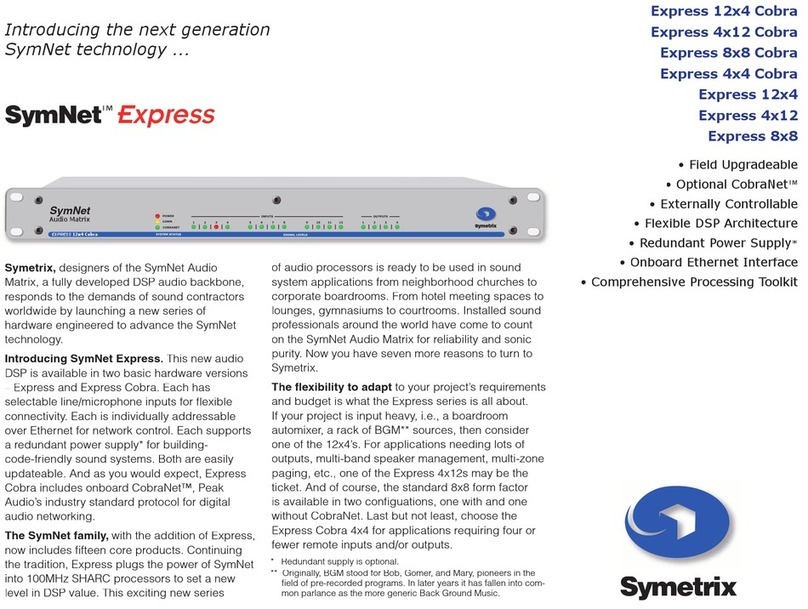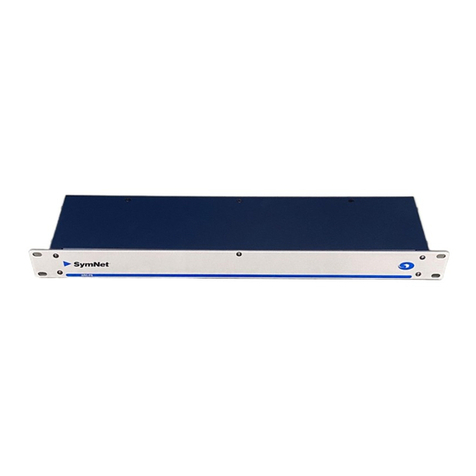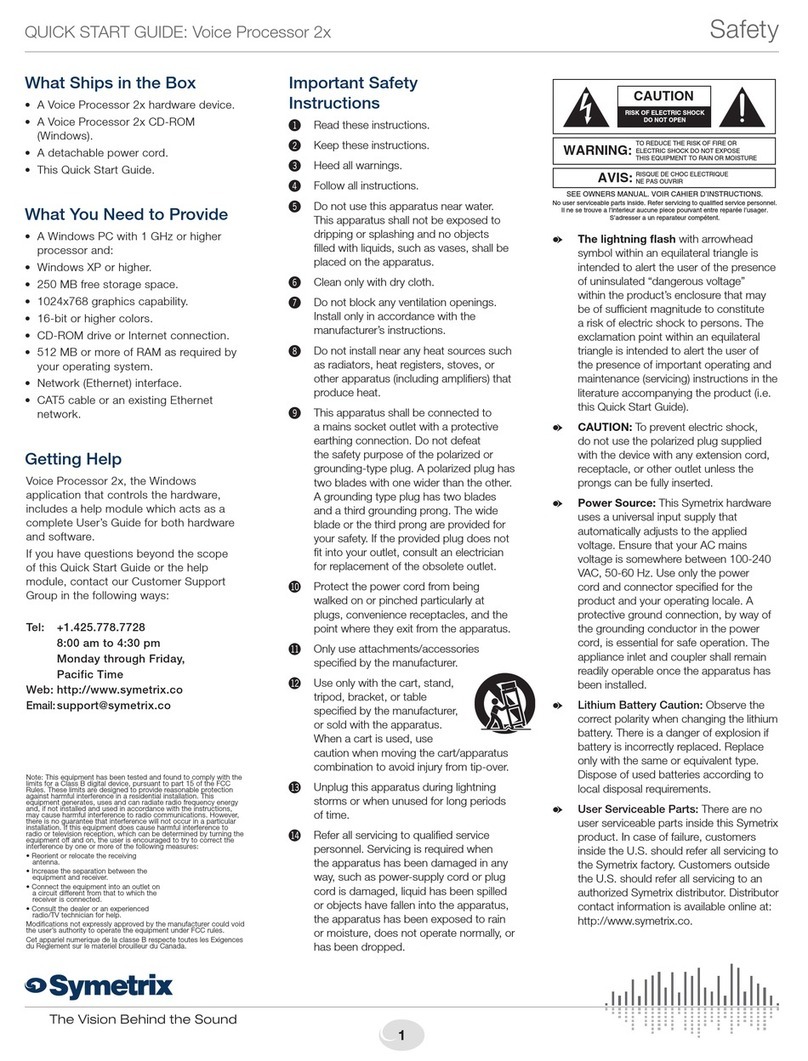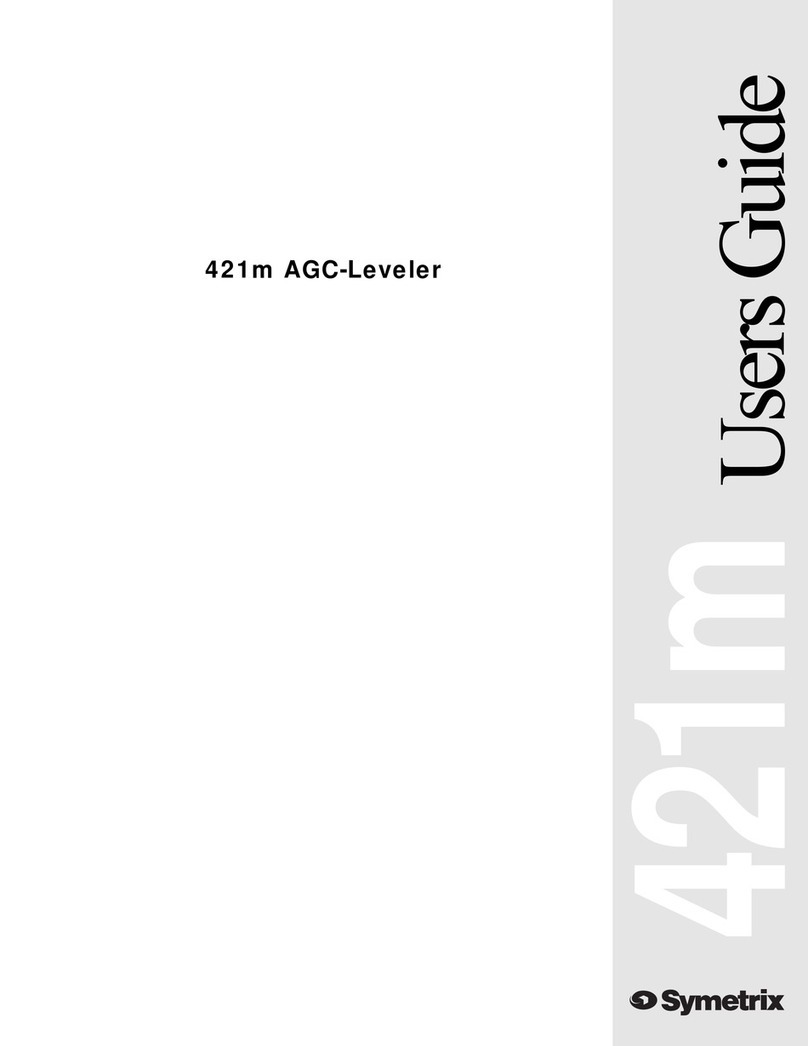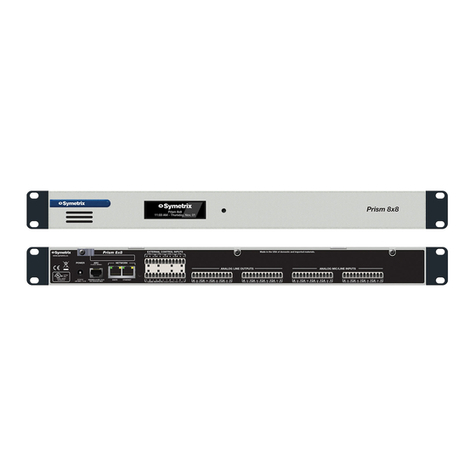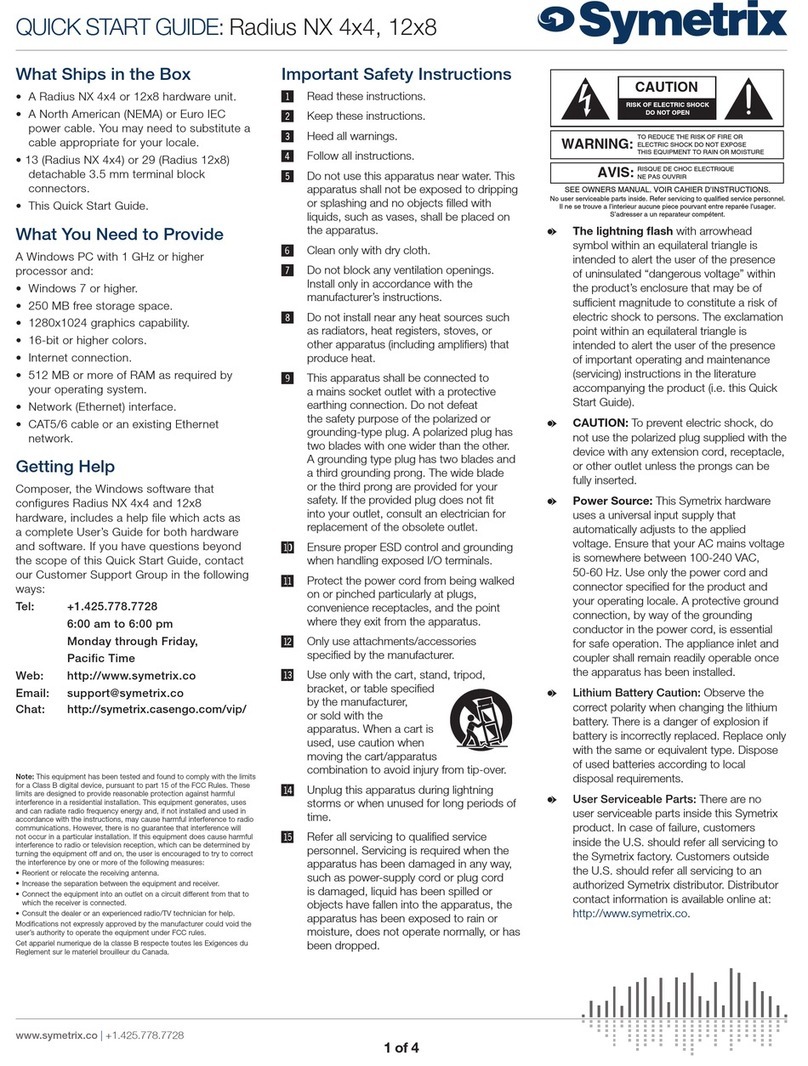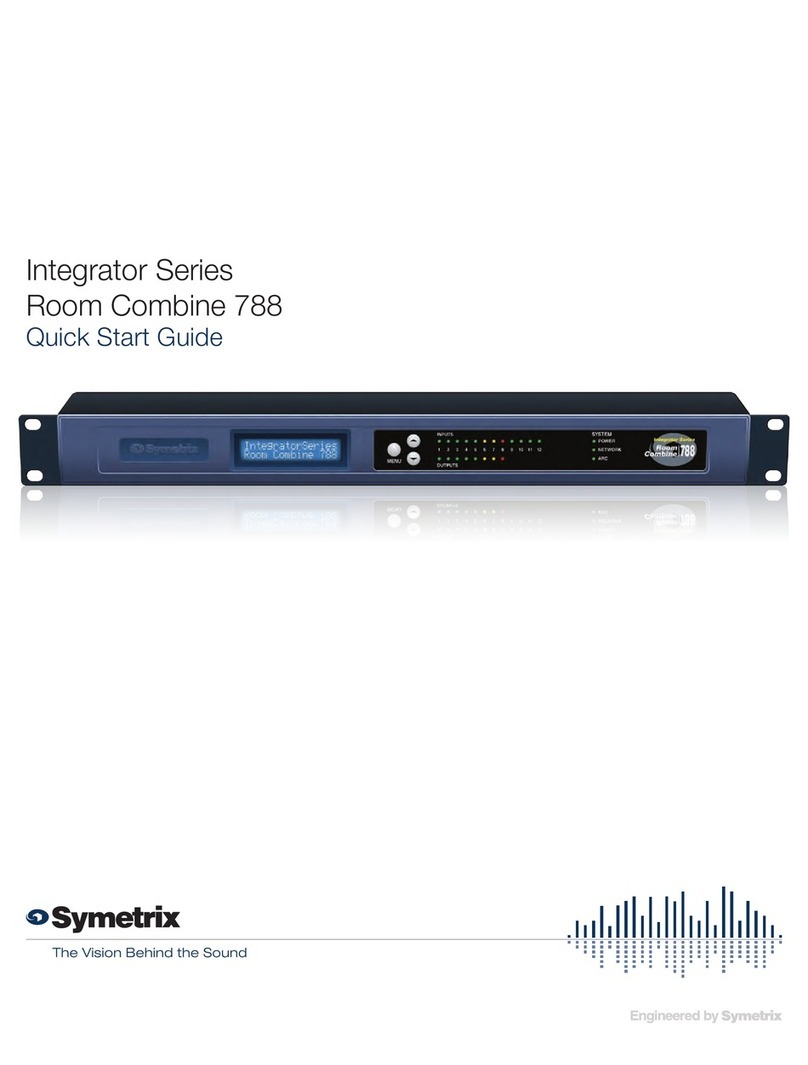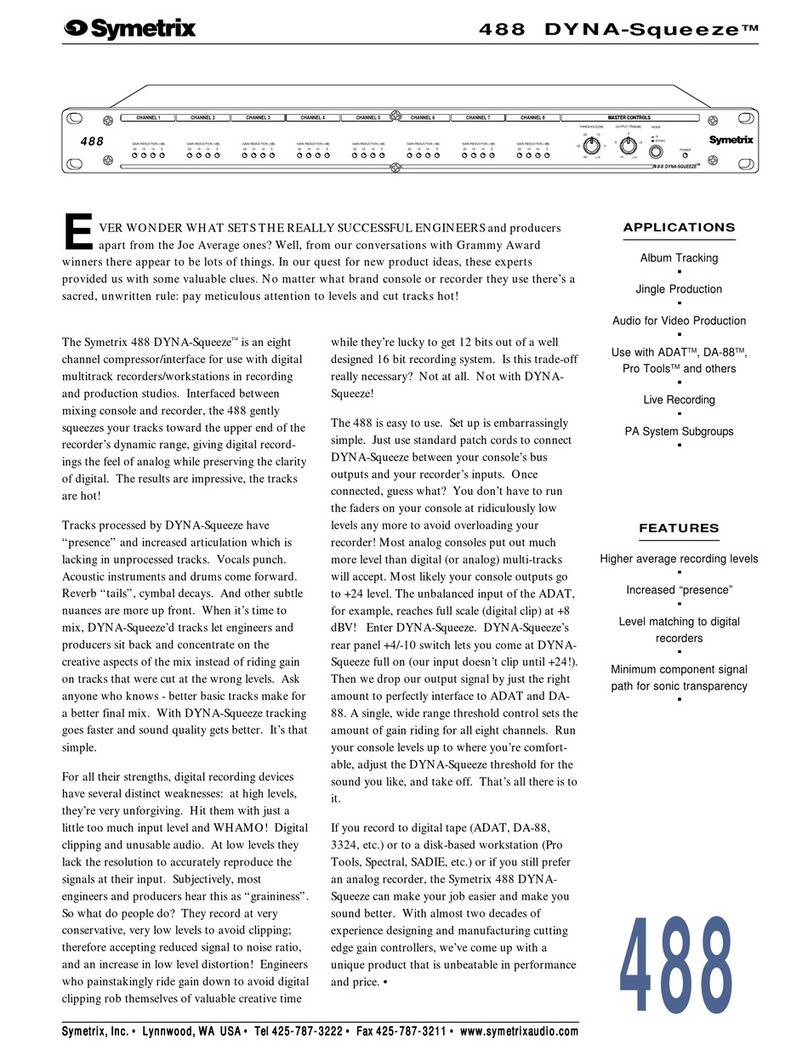It is often said that the sound of some dynamic microphones is affected by phantom
power, and that ribbon mics cannot be plugged into an input that is phantom powered.
For the most part these are myths that grew out of difficulties that occured as aresult
of some other problem in the mic circuit:
1. When XLR connectors are mated there is no guarantee that both pins 2
and 3will make contact at exactly the same time. It is possible that a
damaging current could flow through the mic for abrief moment under these
conditions. However, this is acon~nector problem, not aproblem with the
mic itself, or phantom power in particular.
2. If the mic’s output transformer has developed leakage, the microphone
may become noisy (crackling, sputtering or even humming) when phantom
power is turned on. The leakage, not the power, is the problem. The
available solutions are to turn off the phantom power, put a1:1 transformer
between the mic and the input, or get the mic repaired.
CAUTION
Do not use phantom power before consulting the microphone
manufacturer's literature. Many condenser microphones have non-
standard power requirements, and may be damaged by +48 volt
powering. Unbalanced microphones must not be used with phantom
powering.
1.4 Downward Expander, Compressor/Limiter
The 528 Voice Processor utilizes Symetrix^ program controlled interactive dynamic range
processing technique to combine the best attributes of both compressor/1imiters,and
expanders, ’’Program controlled” means the 528^s dynamic range processor section
analyzes incoming signals, then adjusts its attack and release times to match the
transient characteristics of those signals.
Levels are kept in check by the compressor/ limiter, which responds quickly to transients,
and gently to normal speech level changes. The downward expander^ soperation is the
inverse of the comp/limiter, so it prevents ’’pumping” and ’’breathing” even when high
ratio compression is necessary. Because the compressor/1imiter and the downward
expander are interactive, the 528 always responds appropriately, while providing
automatic control over awide range of input levels.
Strictly speaking, the terms compressor and limiter refer to two different devices.
However, the two are often combined into asingle device called acompressor/ limiter.
Compressor/1imiters usually perform as either acompressor or alimiter, but not both at
once. Functionally, acompressor /1imiter is adevice that lets the user define, or
predetermine ,the maximum level of an audio signal.
Expanders and gates are the functional opposites of compressors and limiters.
Compressors continuously reduce the dynamic range of signals that are above threshold,
while expanders continuously increase the dynamic range of signals that are below
threshold. Limiters can be thought of as very high ratio compressors, and gates can be
thought of as very high ratio expanders.
2

